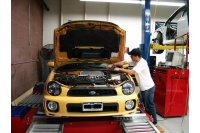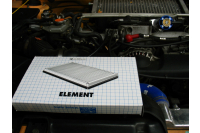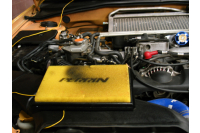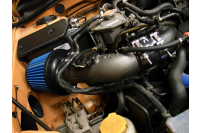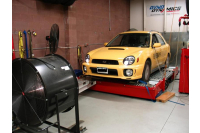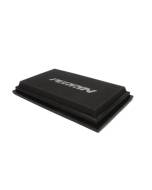We use cookies to make your experience better. To comply with the new e-Privacy directive, we need to ask for your consent to set the cookies. Learn more.
Part 5: Intakes don't work! Or do they?

Whether you just bought your Subaru, or you have had a WRX since they first came to our shores, chances are that you have run into this issue. It is easily one of the most discussed issues out there as far as performance, and just about everyone will tell you that they know the real deal when it comes to intakes and Subaru’s
Well, I have no idea. Or, at least had no idea.
There are basically two theories out there. The first is that the best intake that you can get for the WRX happens to be the one that comes with the car. This is nice because everyone all ready has it. Of course, you can add a high-flow filter to help it flow a little better, but otherwise, just leave it alone.
The second is that an intake of some kind, ideally a cold air intake, will free up a lot of Horse Power, make your turbo spool up sooner, give you improved throttle response… Heck, maybe even better gas mileage. These range in price widely, and there are few different types to choose from, and it seems like for every story about one of these delivering great results, there is a story about one that didn’t work at all…
Now, as you have noticed from all the previous installments of this Blog, I have subscribe to the Stock Air Box theory. In fact, this is my second WRX, and on both cars, I put in a high-flow filter, and never though another thing about it. But there have been a few new intakes that have come out recently that have made me ask a fateful question…
Is there horse power out there that I am missing out on?
Well, I have had my suspicions for a while, but they were just that. Suspicions. There have been a couple intakes that have come out lately, namely one made by Subaru Performance Tuning (SPT) that made me wonder if I was still holding fast to a concept that has gone the way of OBDI. Then there is the fact that for virtually every other tuner car out there, an intake is the first power mod that people do, and with good results. Clearly it was time to do some experimentation.
I mentioned my idea to Kris at Logic Imports, and it turns out he was as curious as I was. With a dyno secured, all that was left to do was to pick an intake, and set up a testing criterion.
As far as what filters to use, well, the baseline was clearly going to be the stock air intake system, with a Subaru filter. Next, I have been running a Perrin Foam Panel filter for the last couple thousand miles, so that was a natural second filter. The Foam filter is at least as free flowing as a cotton gauze filter, if not even better, so it should give a reasonable result for a panel filter.
Then came the hard choice. What kind of intake to test…
If you decide to put an intake on your car, the most important piece of information that you need to know is if it is designed to work with the stock Mass Air-Flow Sensor (or MAF). If there is something that separates Subaru’s from other cars when it comes to intakes it is the fact that their MAF sensors are much more sensitive. If an intake isn’t designed to work with the stock MAF, it can create turbulence that cause the MAF to read out of range. This will throw a Check Engine Light (CEL), and it means that there is air getting past the MAF that isn’t being metered, causing you to run lean. This is a real problem. In my opinion, if you have an intake that is throwing a CEL, it needs to come off immediately, or get your car tuned to re-calibrate the MAF signal. Those stories about an intake blowing up the engine if your Brother’s Cousin’s former room-mate’s WRX could very well be true. I have seen it happen a couple of times, and I just don’t think it is worth the risk.
So first we need an intake. There are a few out there to choose from, and we decided to go with the SPT intake for two reasons. First, it bolts on easily, and it almost looks like a factory part, which isn’t surprising as Subaru made it. Second, this is the intake that got me curious. It was a pretty widely held belief that the stock intake was best, so for Subaru to come out with one… I also have to confess that I had the opportunity to talk to one of the people that helped develop this intake at Subaru, and he assured me that they had spent a lot of time developing this intake to work properly, and to make power. But I had to see the numbers for myself.
Now on to the testing. What we decided to do was to take out as many variables as we could so that we knew that any gains that we saw on the dyno would be clearly attributed to the changes we made, and nothing else. We wanted to perform the testing in a short amount of time so the atmospheric conditions would be the same for all the tests. We also decided that we would re-set the ECU with the Access Port after installing each filter so that they would all be starting from the same learning point. We would then do between 7 and 10 pulls to allow the ECU to adapt to the new system. Then we let the car cool off for 20 minutes, after which, we let the car come back up to normal operating temperature, and did a few more pulls to make sure that we were getting consistent numbers, and that would be our result. One more key testing point was that we performed all the tests with the hood closed to try to better simulate actual driving conditions.
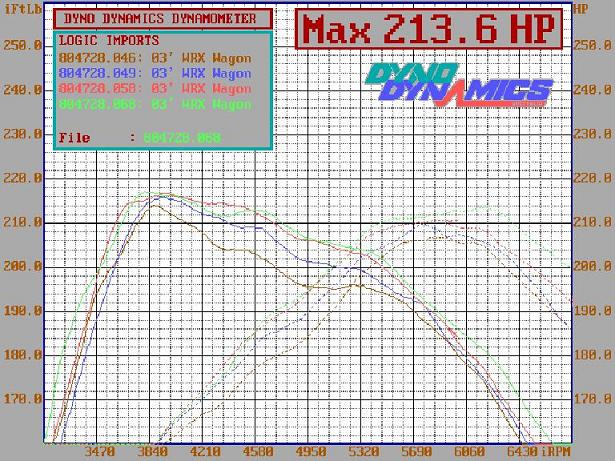
So here is what we found. On this graph, run number 46 is the car with a brand new Subaru filter, 49 is the car with the Perrin filter, and run 58 is the SPT intake. All of those are of course on our Project Car, with the Cobb Stage 2 Protune that you can read about in our previous installment. I will tell you what run number 68 was in a moment.
From looking at this graph, you can see that we gained about 4 ft/lbs of torque over the stock filter with the Perrin between 3,500 rpm to 5,500 rpm, and gained about the same over the Perrin with the SPT over the stock range. All in all, the panel filter is definitely a great modification for the cost, but the SPT definitely out performs it. Now, we did measure the intake temperature for all the tests, and it was pretty consistent at 90 deg. Fahrenheit no matter what system we were using, so I believe that the heat shield on the SPT intake definitely does its job. We did get a temperature spike once with the SPT intake, but we let the car idle for a minute with the fan still on, and the intake temperature immediately dropped.
Now, what was really interesting was what the Ignition Advance Multiplier did. First, the Subaru ECU is dynamic. It is always looking at the information it gets from its sensors and trying to make more power. This is what people often refer to as “learning”. One way to gauge how well this is going is with the Ignition Advance Multiplier, or IAM. This is a measure of how much more timing the ECU feels it can run with out putting the engine in jeopardy. The higher this number, the more power you are getting just by your ECU being a little more aggressive.
When we re-set the ECU before each test, the IAM goes back to its starting point of 12. With each of the panel filters the IAM would stay up for a run or two, and then go to zero, and once it did, we couldn’t get it to come back. (One possible explanation for this is that the car was tuned with this set up, and was pushed pretty much to the max, so there wasn’t much room if any for the ECU to change anything). However, with the SPT intake, the IAM would stay at 12 no matter if we heat soaked the intercooler, or engine by doing successive pulls. Basically, the engine was telling us that it was happier with this intake than with either of the panel filters.
This leads me to run number 68. Kris had the feeling that with the SPT intake there was some more room for tuning, so he spent literally 10 minutes, and tinkered with a couple load sites and the result is that run. This is easily the best result, and notice that we never drop below 200 whp after about 5,000 rpm. He definitely felt that there was more power potential there, but it was too late to really explore that.
I have now been driving around with the car for a little over a week, and I can say that it does feel like there is a little more power, but more than that, it seems like the turbo is a lot quicker to spool between shifts. I also think that it feels like the car is pulling harder in the higher rpm range than before, as the dyno chart shows. Over all, I am very happy with the results, and am now sorry that it took me a few years to warm up to the idea of an intake on my WRX.
I have to say that these are by no means the ultimate power numbers that these intake systems will produce. It is entirely likely that if the car had more time to learn between testing that it may have been able to deliver higher results for each intake. The problem there is that the more time goes by between each test, especially if we are talking days or weeks, there is a greater chance of outside conditions skewing the results. Also, what we were looking at here was the merits of each system, given as close to identical conditions as possible. By keeping the tests close together, and not letting the ECU learn too much, what we are looking at is a more accurate assessment of the individual merits of each system.
I bet at this point you are wondering why we didn’t test a whole bunch of other intakes at the same time to see which one was the absolute best. First, time was something of an issue. The longest brake between testing was when we had to install the SPT intake, and if we were installing a few cold air intakes, that would have made the testing take a lot longer. Also, that wasn’t what we were trying to find out; we wanted to know first if there was a gain to be had by going with an aftermarket intake. Now that we know that there is, we will more than likely do another test between a few different styles of intakes to see if there is a difference there, and what the best design is. In other words, this is just the first installment of this test…
I have to thank Kris and Mike at Logic Imports for all their help with this test. I would have been doing a lot of driving around in the middle of the night on deserted roads risking life and limb if it hadn’t been for them. I thank you for reading this and apologize for the delay getting this out. Hopefully I will finally be able to get that Sway-Bar installment done before winter hits.. I make no promises though…

